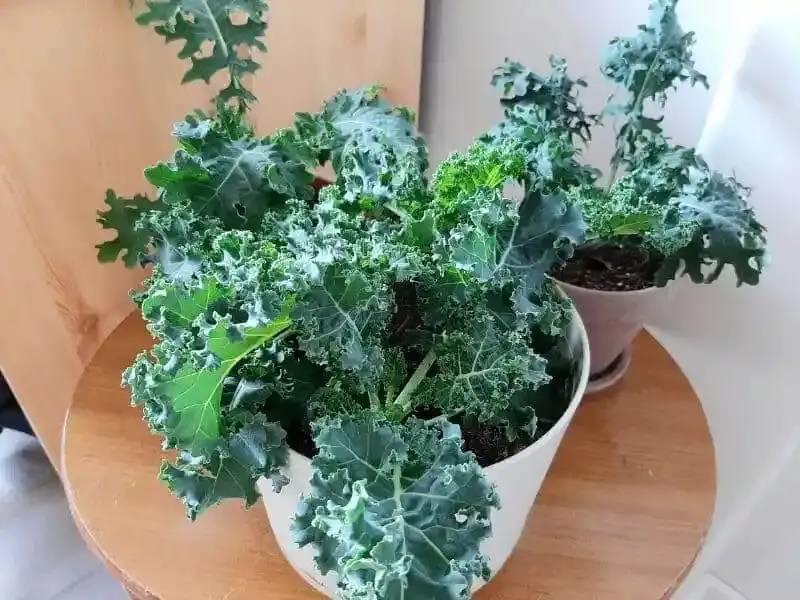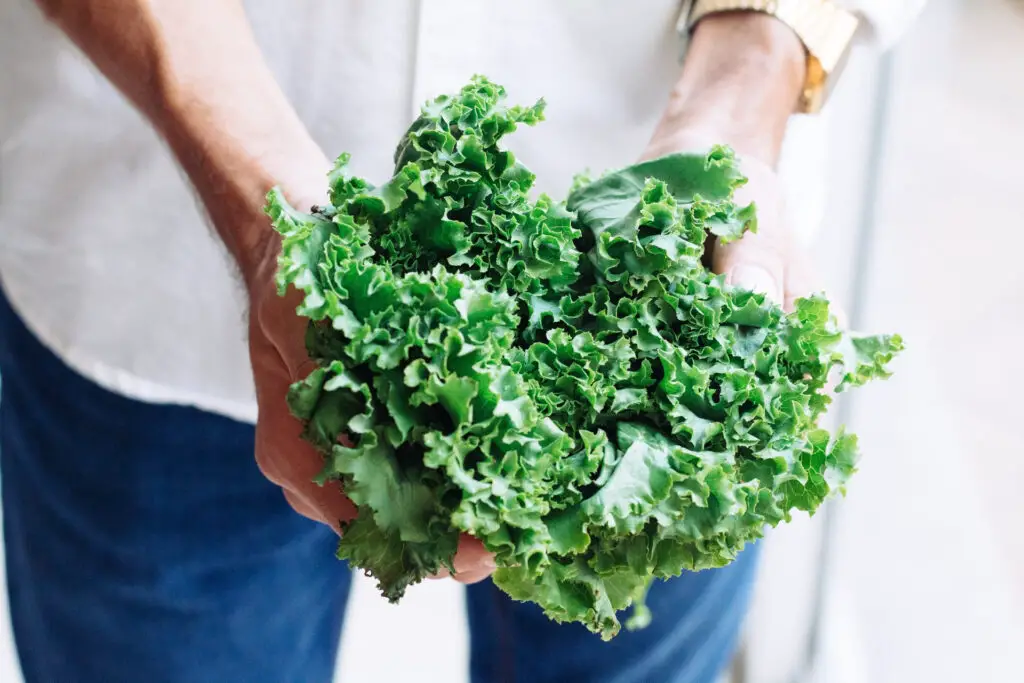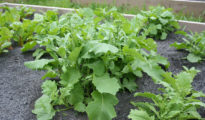Kale is a nutrient-rich leafy green vegetable that is part of the cabbage family and has been around for centuries. It is thought to have originated in the Mediterranean region and was later introduced to Europe and Asia. Today, kale is grown all over the world and is a popular ingredient in many dishes. It is high in vitamins A, C, and K. It is also a good source of fiber and antioxidants. Kale can be grown indoors with some basic knowledge of how to care for the plant.

How to Grow Kale Indoors
To grow kale indoors, you will need a pot that is at least 6 inches wide and has drainage holes. Fill the pot with moistened potting mix and sow the seeds about ½ inch deep. Place the pot in a location that receives bright indirect sunlight. Keep the soil moist but not soggy and within a few weeks, you should see seedlings emerge. Once the seedlings are about 4 inches tall, thin them out so that only the strongest seedling remains in each pot.
Water kale plants when the soil feels dry to the touch. Be sure to provide enough water so that it drains out of the bottom of the pot. fertilize indoor kale plants every two weeks with a half-strength solution of liquid fertilizer. When harvesting, cut the outer leaves first and then allow the plant to continue growing so you can enjoy fresh kale all season long!
Kale Pests and Diseases
Kale is susceptible to a few pests and diseases, but with proper care, these can be avoided. Common pests include Aphids, Cabbage Loopers, and Whiteflies. These pests can be controlled with insecticidal soap or neem oil. Diseases that can affect kale include Alternaria Leaf Spot, Downy Mildew, and Fusarium Wilt. To avoid these diseases, water your plants at the base instead of wetting the leaves. Also, make sure to plant your kale in well-drained soil and provide adequate air circulation around the plants. If you see any affected leaves, remove them from the plant immediately. With just a little bit of care, you can enjoy fresh kale indoors all year long!
How Long Does it Take to Grow Kale Indoors?
From seed to harvest, kale typically takes about 2-3 months to grow indoors.
What Are the Best Conditions for Growing Kale Indoors?
Kale prefers bright indirect sunlight and cool temperatures. It is important to keep the soil moist but not soggy and to fertilize every two weeks.
What Type of Soil is Needed for Growing Kale Indoors?
The best type of soil for growing kale indoors is a moistened potting mix. Be sure that the pot has drainage holes so that the water can drain out.
How Often Should I Water my Indoor Kale Plant?
Water your indoor kale plant when the soil feels dry to the touch. Provide enough water so that it drains out of the bottom of the pot.
How Do I Fertilize my Indoor Kale Plant?
Fertilize your indoor kale plant every two weeks with a half-strength solution of liquid fertilizer.
When is the Best Time to Harvest my Indoor Kale Plant?
The best time to harvest your indoor kale plant is in the morning after the dew has evaporated. Cut the outer leaves first and then allow the plant to continue growing so you can enjoy fresh kale all season long!
Does Kale Regrow After Cutting?
Yes, kale will regrow after cutting. Allow the plant to rest for a few days after cutting before watering it again. Once it has been watered, new leaves will begin to grow.
The History of Kale

The history of kale is a bit murky, but it is believed to have originated in the Mediterranean region. It was then brought to England by Roman invaders in the first century AD. Kale became a popular food in Europe during the Middle Ages and was grown as a source of food for livestock. It wasn't until the 16th century that kale began to be grown as a food for humans.
Kale was first introduced to the United States in the 1700s by European settlers. It quickly became a popular food crop due to its nutritional value and ability to withstand cold temperatures. By the 1800s, kale was being grown commercially in the United States. Today, kale is a popular ingredient in many recipes and is grown all over the world.
The Benefits of Consuming Kale
Kale is often referred to as a superfood due to its high nutrient content. Just one cup of kale contains:
– Vitamins A, C, and K
– Fiber
– Antioxidants
– Calcium
– Potassium
Eating kale can help boost your immune system, reduce inflammation, and improve your bone health. It is also a low-calorie food that is perfect for those trying to lose weight or maintain a healthy weight. Including kale in your diet is a great way to increase your intake of important vitamins and minerals. Try adding it to smoothies, salads, soups, or stir-fries for a simple and delicious way to enjoy all the benefits of this leafy green.



















